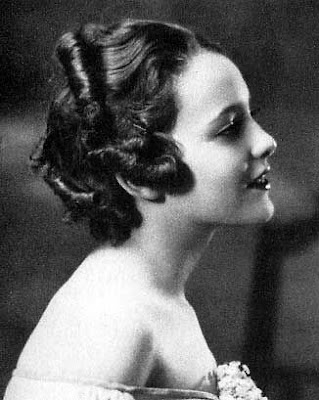
Clearly, the Siren needs to get out of the Oscar Wishlist business. Because she could not have jinxed the ceremony more thoroughly if she'd sent Brian Grazer a link to Dan Kois.
The Siren's been watching this hoedown since she was a wisp of a thing, pleading with her sainted mother to let her stay up and watch in case somebody important--meaning someone OLD--showed up. And despite the fact that two nominated films were explicitly about film history, and the additional fact that a silent movie--a silent movie, my friends, has that really sunk in?--won, the Siren has never seen a show less indebted to any true sense of Hollywood history. It bordered on the perverse. No, fuck it; this crossed the border of perverse and entered the Crown Territory of Bloody-Minded on a permanent visa.
Part of the reason the Siren was MIA yesterday was that she had scheduled a physical bright and early, but the main reason was that this show just about broke her heart.
The Siren knew she was in trouble when the first "old movie" montage showed exactly one black-and-white movie--and it was Raging Bull. A fine film. If anybody had bothered to ask Mr. Scorsese, he might have told them about his movie's debt to Body and Soul, to name only one, but evidently film history stretches to Midnight Cowboy and no further. The other bone thrown to anybody who's ever clicked over to TCM was an inexplicable Cirque de Soleil flying-trapeze act, which started with North by Northwest (a film that went unnominated in all major Oscar categories, by the by) and continued with the decision to screen a clip of the most famous Technicolor movie of all time in black and white…because Gone with the Wind is flippin' old, kids. There was some flapper-style hair around, but any silent clips aside from The Artist itself were so brief as to pass the Siren right on by, which in fairness could have happened, as she took some breaks and spent some quality time with her head in her hands.
The fine old Academy tradition of taking the easiest task in the show, which is to put together a montage of the Great Film People Who've Left Us, and royally screwing it up, is in no danger of being violated, it seems. This one was particularly ghastly. Bleached-out stills, because that's what we remember about movie artists, their ability to hold still, and because if you didn't show a literal reminder of the mists of time, people might not realize these folks are dead. And bad music; in this case, "What a Wonderful World," sung by someone who is Not Louis Armstrong.
And look, the Siren realizes it's mandatory to leave someone out. At this point she suspects it's the AMPAS equivalent of Al Hirschfeld's "Nina" or Jack Lemmon muttering "magic time." Snubbing Harry Morgan, who made more than 100 movies including at least a half-dozen permanent classics…that makes me mad. It also made goddess Kim Morgan mad; she took to Facebook to swat away remarks that Morgan was primarily a TV actor with, "Yeah, and so was Fred MacMurray." (Kim is in Paris with husband Guy Maddin, offering her acting presence and invaluable cinematic intelligence as he makes a project about lost films. You can watch the filming progress live, right here, and the Siren recommends doing that with all her heart. Might cheer us all up.)
No Oscar show is ever completely worthless, though. (Yes, the Siren means that.) In this case, the award of the Foreign Film Oscar to Asghar Farhadi's A Separation was the single most moving and wholly, perfectly correct decision of the evening. If you haven't seen this superb piece of filmmaking, get thee to an arthouse on the double. Needless to say the Siren was also pleased with every Oscar that went to Hugo, a movie she's convinced will live a long time, perhaps long enough to be too old to get mentioned on the Oscars.
But say what you will about The Artist (although the Siren is kind of hoping we already took care of that, to be honest), two of its winners showed some class. Michel Hazanavicius thanked Billy Wilder; the Siren wanted King Vidor, as she said, but Wilder will do nicely under the circs.
And Jean Dujardin thanked Douglas Fairbanks. The Siren doesn't care if you thought his performance was Virginia smokehouse on rye. This was a Frenchman in a roomful of Americans, the sole person up there thanking an artist of the old days who directly and substantially contributed to what got him the Oscar.

Small mercies and small mercis. Who knows, maybe next year, Angelina Jolie will remember to thank Joan Crawford, for helping her perfect THIS POSE.














